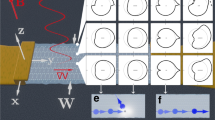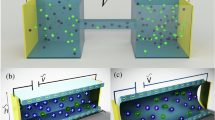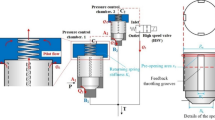Abstract
IN 1920, Barkhausen and Kurz discovered that an ordinary three-electrode valve could be made to give rise to oscillations of very high frequency (greater than 3 × 108 cycles per second) if the grid was maintained at a relatively high positive potential while the anode was made slightly negative with respect to the filament. The explanation for the occurrence of such oscillations appears to be that a condition of negative resistance is possible when the electrons are given a to and fro motion within the valve. It occurred to me some time ago that such a vibratory motion of electrons should be obtainable from a two-electrode valve of special design but circumstances prevented the construction of the valve until recently.
Similar content being viewed by others
Article PDF
References
J. Sahanek, Phys. Z., 33, 693 ; 1932.
Author information
Authors and Affiliations
Rights and permissions
About this article
Cite this article
McPETRIE, J. Production of Electronic Oscillations with a Two-Electrode Valve. Nature 131, 691 (1933). https://doi.org/10.1038/131691b0
Issue date:
DOI: https://doi.org/10.1038/131691b0



